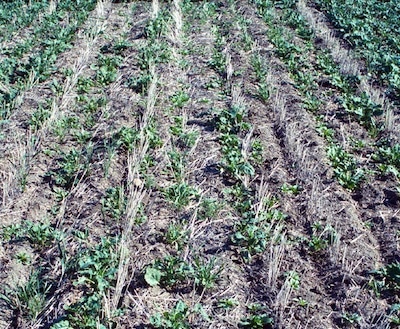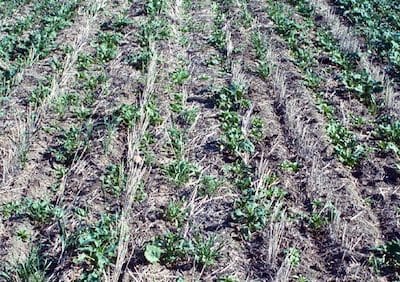
The ideal canola plant stand is a uniform 7 to 10 plants per square foot across the field. This allows for some plant loss later in the season to insects or disease while still providing a crop that meets the minimum 4-5 plants per square foot required to meet its yield potential.
A uniform plant stand of 7 to 10 plants per square foot can also mature faster.
Consider this: With an average seeding rate of 5 lb./ac., an average thousand seed weight (TSW) of 5 grams, and 50% seed survival rate, you get only 5.2 plants per square foot. This doesn’t leave much margin for error.
This result could improve with achievement of a higher seed survival rate, but do you know your seed survival? Survival of 50% is typical across the Prairies, but the range is often 20-80%. Each situation will produce a different seed survival rate. Knowing how to improve the survival rate is key. (Link to recent article.)
This includes:
—Seed 1/2” to 1” deep consistently row to row.
—Seed slower to ensure good and even seed depth from all openers. If you decide to speed up 0.5 mph, you may consider increasing your seeding rate by 0.5 lb./ac. to compensate.
—Limit seed-placed fertilizer.
—Penetrate trash for good seed to soil contact.
—Leave a firm seedbed, again for good seed to soil contact and seed placement.
—Pack appropriately.
—Rotate crops.
—Seed into warm moist soils. Soils of 5°C and a general warming trend expected is a good start point. Seeding into cold soils can reduce survival.
Click here for more detail on these tips.
At current prices, if taking steps to improve seedling survival — even if those steps mean slowing down to do a better job — improve yields by one bu./ac., that’s $15,000 over 1,000 acres of canola.
Seed size is less important than the agronomy steps to improve seed placement and seed survival. Knowing a seed lot’s thousand seed weight (TSW) gives you an idea how your seeds per square foot planted this year compares to last year. Note that it may take an extra 10% survival rate to compensate for a 1 g increase in TSW and still reach 5 plants per square foot. There is little room for error.
Don’t rely too much on TSW until you have estimated your seed survival rate for the year based on your seeding practices and current and expected environmental conditions. After analyzing the relationship between TSW and plant counts, you may discover that your target seeding rate is on the low side.

